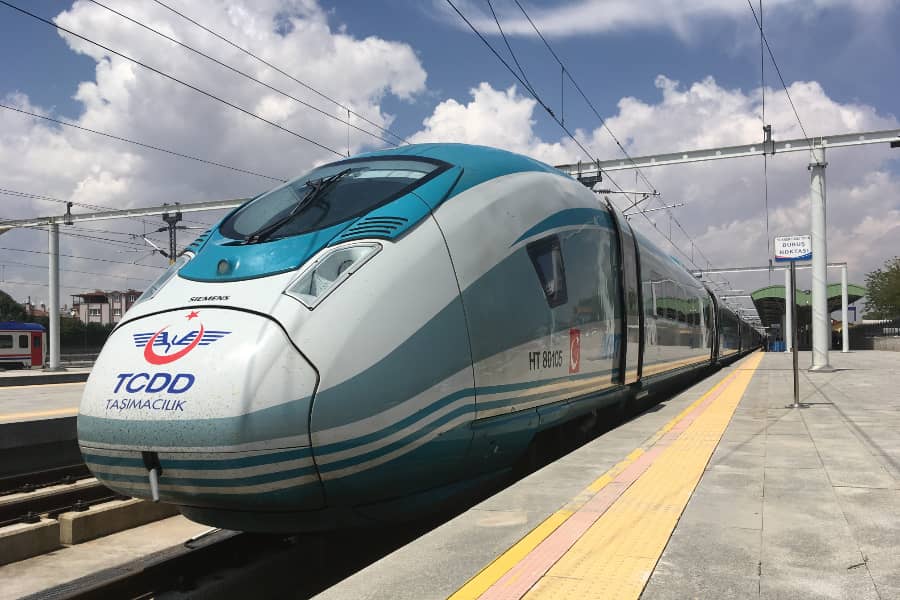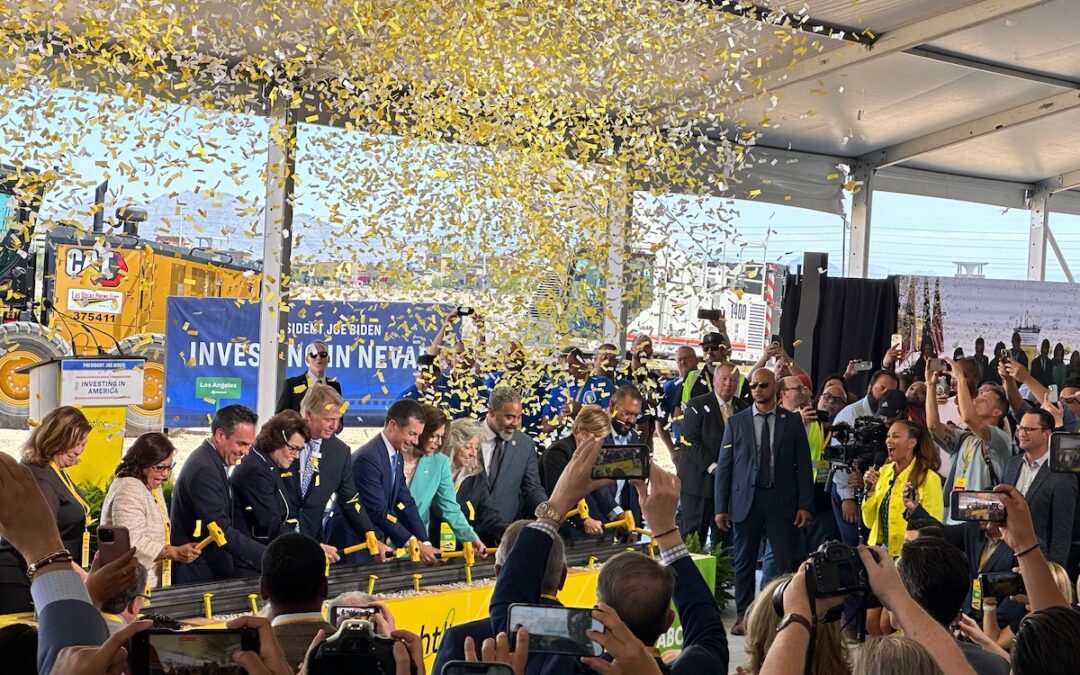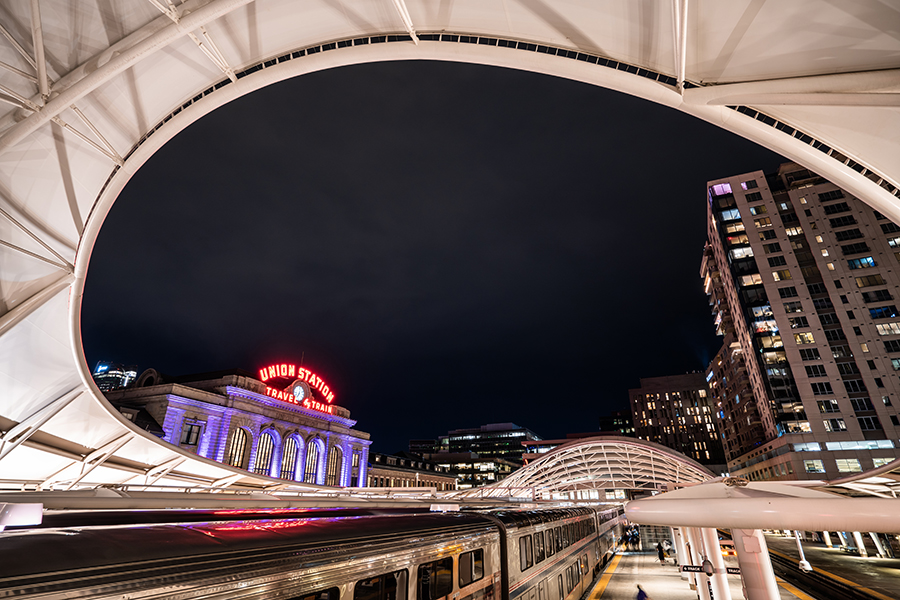The railroad Brightline today broke ground in Nevada on its new Brightline West project. Brightline will use trains traveling up to 200 miles per hour to cut the travel time between Las Vegas and Los Angeles in half. The company already operates successful trains...
Since its first high-speed trains began running in 2009, Turkey has expanded its network.
Roughly 800 miles of dedicated high-speed lines are in use, and that number will rise sharply over the next few years. Turkey aims to have more than 3,400 miles of high-speed line in its railroad network by 2025.
As a largely mountainous country, Turkey is an unlikely leader in HSR. A fourth of its land surface is at least 4,000 feet above sea level. And trains need long, straight, smooth paths to operate at high speeds. The only solution is to build tunnels and viaducts, which are relatively expensive. Even so, Turkey is moving forward and doing what needs to be done. A line of more than 300 miles that is currently under construction, for example, requires 21 viaducts and 25 tunnels. The line will connect Turkey’s capital, Ankara, with its third-largest city, Polati, on the Aegean coast. The project is ambitious—and the returns on the investment will be big. Travel time between the two cities will be slashed from 6.5 hours (driving) to about 3.5 hours on high-speed trains.
The U.S. is now in a situation similar to Turkey’s two decades ago. The first true high-speed line in the U.S.—through California’s Central Valley—is under construction. It is scheduled to open in the late 2020s. Several other lines are also in the planning stages.
Here Are Five Takeaways From Turkey’s Experience That Should Help Guide and Inspire the U.S. As We Build Our High-Speed Train Networks.
1. Start with doable projects that deliver near-term results.
Turkey didn’t begin with a 300-mile line through an especially mountainous region. It started with a segment connecting Ankara to Eskisehir—a distance of about 150 miles.
Then, in the second phase, it added about 180 miles of line that runs through more rugged, mountainous terrain. One 133-mile segment, for example, required building more than 70 bridges and tunnels. California is using a similar strategy to build its San Francisco to L.A. line. The first phase is a 171-mile line in the flat Central Valley. The second phase will connect the endpoints of that line to L.A. and San Francisco, which will require tunneling through mountains southeast of S.F. and northeast of L.A. Starting with the most doable segment as a foundation—then steadily adding segments—makes trains usable in the near term. And that helps build support and political will for them. Starting with the most doable projects also allows the relevant agencies and industries to build up their know-how and expertise before tackling bigger challenges. They get better at what they do.
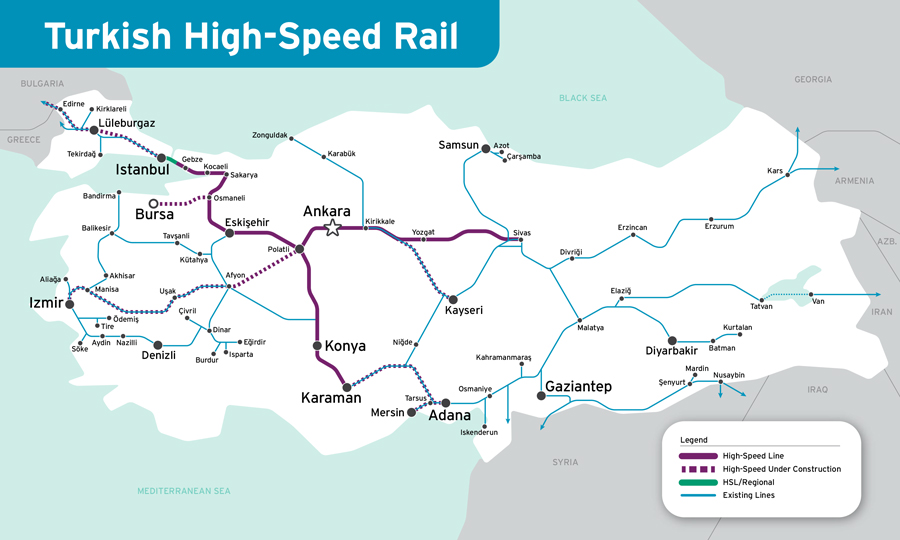
Turkey built its first high-speed line in the flat lands west of Ankara.
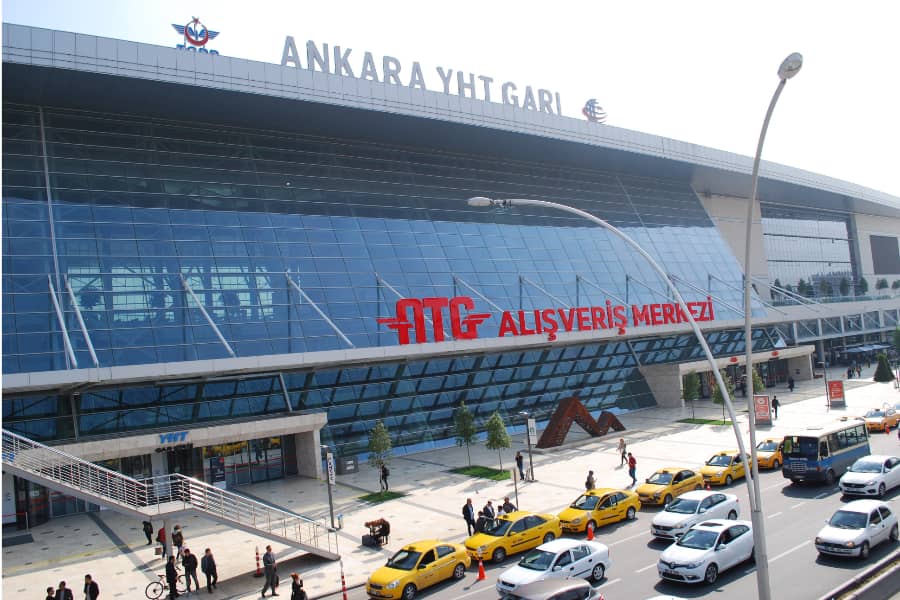
Ankara’s central station. photo: Rick Harnish
2. We could do so much better.
Turkey’s railroad system includes the Marmaray Tunnel, an underground structure of more than eight miles that connects Europe and Asia with the first rail link between the continents.
Nearly a mile of it runs beneath the Bosphorus straits, in Istanbul. At roughly 180 feet beneath sea level, it is the world’s deepest immersed structure. Japan invested $1 billion in the $4 billion project. The tunnel was part of a bigger project to improve 39 miles of rail line between the European and Asian sides of Istanbul—i.e, the Halkali-Gebeze railway. As part of that project, the existing double tracks were reconstructed to add a third track, and 38 stations were rebuilt.
The takeaway from all of this? What keeps the U.S. from building a twenty-first century transportation system isn’t a lack of ingenuity or money. It’s our priorities. Having a world-class class transportation network is so important to Turkey that it has constructed nearly a mile of rail tunnel under the sea. Think of what we could build—and the transportation system we could have—if we put our minds and political muscle behind high-speed rail.
3. HSR improves all other forms of transportation.
When people think about high-speed rail, they often focus on how it reduces travel times between major cities like Ankara and Istanbul. But that metric barely scratches the surface of its transformative power.
For starters, high-speed trains stop and start quickly, which allows them to make multiple stops and serve multiple communities in one run—yet still be competitive with flying, time-wise. And they improve every other element of a transportation system. For example, in addition to handling high-speed trains, the Marmaray Tunnel (noted above) is also the spine of Istanbul’s commuter-rail network. In the best transportation systems around the globe, this is the norm: High-speed trains work in synergy with bus, commuter rail, and conventional passenger-rail systems. Working together, they all work better. Even freight shipping can benefit. In the case of the Marmaray Tunnel, the third track added during the recent reconstruction handles both high-speed trains and freight trains. That setup, and the relationship between freight traffic and HSR generally, should be top of mind for states and regions as they seek to reduce their carbon footprints. A recent analysis of China’s HSR system found that high-speed trains cut greenhouse-gas emissions by shifting more freight onto conventional rail lines—thus taking freight traffic off roads. Shipping by rail is about four times more energy efficient than by truck.
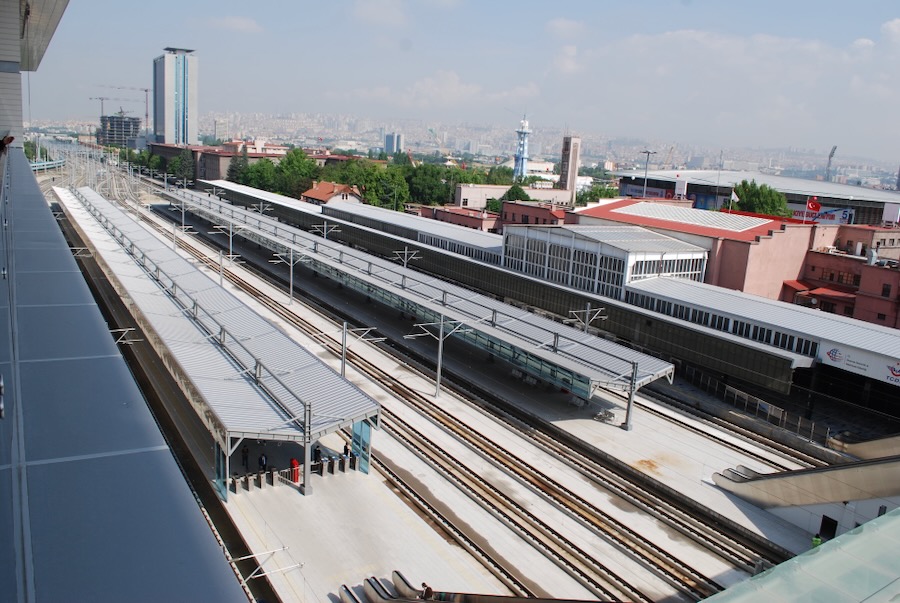
The construction of a regional rail network was coordinated with the construction of high-speed rail in Ankara. photo: Rick Harnish
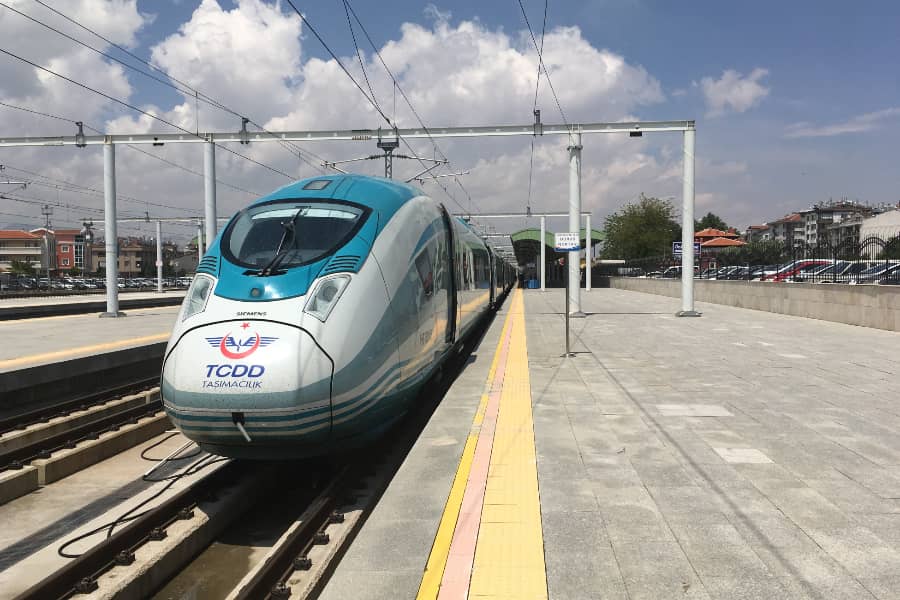
A high-speed train serving Konya, photo: Rick Harnish
4. A vision and a plan are critical.
The high-speed rail network in Turkey has developed rapidly.
Its first line began operating in 2009, and Turkey plans to have 3,400 of high-speed lines in operation by 2025. This rapid expansion is driven by a vision and a plan. The centenary of the Turkish Republic in 2023 has been a rallying point: Officials tout the expansion of the network as a symbol of the country’s progress. And they’ve tied that celebration to specific goals. But having a vision isn’t just about adding new lines. It’s about adding them strategically, so that they deliver the biggest returns. In Turkey, that means making plans to connect industries with railways over the next 100 years, as the country’s minister of transport and infrastructure recently said. In the U.S., the best model we have for strategic thinking is California. It has a 2040 vision for not only how its public transit systems will expand but how transit, passenger rail, and HSR will improve each other through coordination and integration. The U.S. needs a similar vision and plan for a national HSR network.
5. HSR powers economies in more ways than one.
HSR is bringing Turkey’s cities together by slashing travel times between them.
On conventional trains, it took 12 hours to travel from Ankara to Konya; the journey by high-speed rail takes less than two. Better mobility has a real impact on productivity. But that isn’t the only economic benefit. A commitment to trains also boosts a wide variety of domestic industries. Turkey recently began building its own electric trains, for example, and it plans to begin exporting them to other European Union countries soon. With HSR expanding rapidly worldwide, the field is wide open for U.S. companies to benefit in the same way. They already are, to some extent. Workers on a rail line under construction in Turkey recently used a boring machine built by the Ohio-based company Robbins to establish several tunneling world records. Think of the possibilities for boosting our manufacturing base if U.S. companies not only build machines for use worldwide but supply them to a vibrant domestic HSR sector.
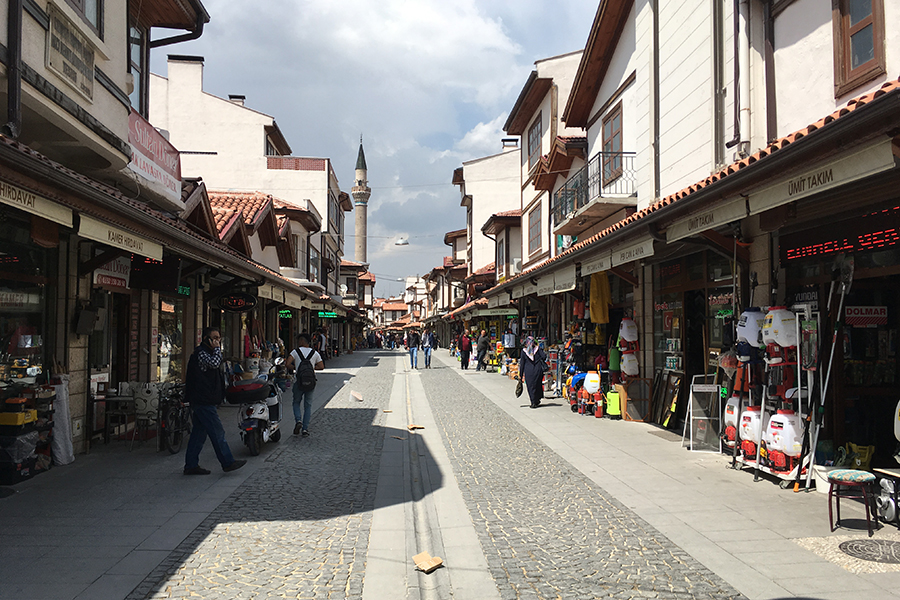
A shopping street walking distance from the Konya railroad station. photo: Rick Harnish
High-speed trains open up all kinds of new opportunities—for all kinds of people.
The director of the agency that operates Turkey’s trains recently wrote that high-speed trains are “the transportation system of the 21st century” and the “backbone of our transport system.” Surveys show that 40 percent of riders on the trains are tourists, 33 percent are commuters, and 22 percent are students.
The case of Turkey confirms it. It’s time for the U.S. to get to work.
The Latest from HSRA
Our Latest Blog Posts
Check out the latest news, updates, and high speed rail insights from our blog!
